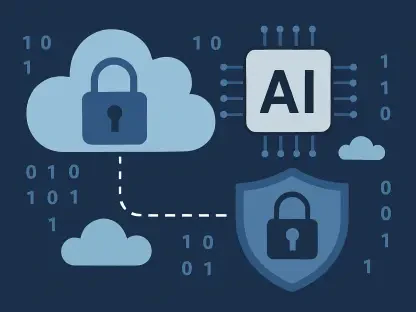The landscape of access control systems in multifamily communities is undergoing a significant transformation, driven by rapid technological advancements. These innovations are not only enhancing security measures but also improving the convenience and quality of life for residents. Over the past few years, the focus has shifted from traditional mechanical locks to more sophisticated electronic and smart access control systems. This shift is largely due to the increasing need for enhanced security, better management capabilities, and the integration of multiple smart technologies. This article explores the evolution of access control solutions in multifamily properties, highlighting the various benefits, challenges, and future directions of these emerging technologies.
The Shift from Traditional to Electronic Locks
For decades, traditional mechanical locks were the cornerstone for securing multifamily properties, providing a simple and familiar means of access control. Despite their reliability, these locks come with several significant drawbacks that have led property managers to seek more advanced alternatives. Mechanical locks can be easily compromised through key duplication, posing a considerable security risk. Moreover, the process of rekeying locks can be both time-consuming and costly, adding an extra layer of complexity to property management.
As a response to these challenges, the introduction of electronic locks has become an attractive solution for many property managers. Electronic locks offer enhanced security features and streamlined management processes compared to their mechanical counterparts. One of the primary advantages of electronic locks is the ability to provide a digital log of entries, giving property managers real-time visibility into who is entering and exiting the property. This feature significantly improves security by offering detailed records that can be used for monitoring and investigation purposes.
Additionally, electronic locks simplify the process of managing access credentials. Unlike mechanical locks, which require physical rekeying, electronic locks can be reprogrammed quickly and inexpensively. This capability reduces the risk of unauthorized access by allowing property managers to promptly revoke access for tenants who move out or lose their keys. The transition to electronic locks is driven by the need for better security and management efficiency, making them an increasingly popular choice for multifamily communities.
Exploring Various Electronic Access Systems
The market for electronic access control systems is extensive and diverse, offering a range of solutions to meet the specific needs of different properties. Among the most popular options are keypad readers, RFID systems, and smartphone-based mobile access controls. Each of these systems comes with unique benefits, allowing property managers to select the most suitable solution for their community.
Keypad readers provide a straightforward and secure method of access by allowing residents to enter a unique code to gain entry. This eliminates the need for physical keys, reducing the risk of key loss or theft. RFID systems, on the other hand, use key cards or fobs that can be swiped or tapped to unlock doors. These systems offer a convenient and fast method of access, which is particularly useful in high-traffic areas.
Smartphone-based mobile access controls represent the latest advancement in access control technologies. These systems leverage residents’ smartphones to serve as access credentials, offering the ultimate in convenience and security. With mobile access controls, residents can unlock doors using a smartphone app, which can also be integrated with other smart home features. This level of integration allows for a seamless and connected living experience, enhancing the overall appeal of the property.
The variety of electronic access systems available ensures that there is a solution for every multifamily community, regardless of its size or budget. Property managers can tailor their access control strategy to meet the unique needs of their property, providing residents with a secure and convenient method of entry.
Integration with Smart Technologies
Modern access control systems are increasingly being integrated with other smart building technologies, creating more connected and efficient living environments. This integration allows access control systems to work in tandem with a range of other technologies, such as security cameras, energy management systems, and smartphone apps. The result is a comprehensive and cohesive security solution that enhances both resident convenience and property management efficiency.
One of the primary benefits of integrating access control systems with other smart technologies is the ability to create a unified security network. For example, when a resident uses their access card or smartphone to enter the building, the event can be automatically logged and captured by security cameras. This additional layer of security provides property managers with valuable visual data that can be reviewed in case of suspicious activity or security breaches.
Integration with energy management systems is another significant advantage, enabling properties to optimize their energy usage. Access control systems can trigger actions such as turning lights on or off and adjusting the thermostat based on when residents enter or leave the premises. This interconnected approach not only enhances security but also contributes to energy efficiency, reducing operational costs, and promoting sustainability.
The integration of access control systems with other smart technologies ultimately provides property managers with a centralized platform for monitoring and controlling various aspects of the property. This increased level of control and insight allows for more responsive and effective property management, ensuring that any issues can be addressed promptly and efficiently.
The Rise of Cloud-Based Access Control Systems
Cloud-based access control systems are revolutionizing the way multifamily properties manage security and access. By leveraging cloud technology, these systems offer remote management capabilities and enhanced functionality that traditional systems cannot match. Property managers can control and monitor access from virtually anywhere using a web-based interface or mobile app, providing unparalleled flexibility and convenience.
One of the most significant advantages of cloud-based access control systems is the ability to perform continuous monitoring and receive real-time updates. Property managers can receive instant notifications of any suspicious activity, allowing them to respond swiftly and proactively to potential security threats. This level of real-time oversight ensures that properties remain secure and any issues are addressed as soon as they arise.
Additionally, cloud-based systems can be easily updated with new features and security patches, ensuring that the property’s access control measures remain current and robust. This capability eliminates the need for manual updates and reduces the risk of outdated or vulnerable systems. However, to function effectively, cloud-based access control systems require reliable network connectivity. Properties must have a robust network infrastructure in place to support these systems, including backup power solutions to ensure continuity during outages.
The rise of cloud-based access control systems highlights the importance of embracing modern technologies to enhance security and management efficiency in multifamily communities. These systems provide a scalable and future-proof solution that can adapt and evolve to meet the changing needs of property managers and residents alike.
Future Trends: Wearable Technology and Biometric Access Controls
As technology continues to advance, new trends are emerging in the field of access control that promise to offer even more sophisticated and secure solutions. Among the most promising developments are wearable technology and biometric access controls, both of which present innovative approaches to property security.
Wearable technology, such as smartwatches, offers a convenient alternative to traditional key cards and fobs. Residents can use their wearable devices to gain access to the property, eliminating the need to carry physical keys. This technology provides a high level of convenience, as wearable devices are always on the person’s body and less likely to be lost or forgotten. Additionally, wearable access controls can be seamlessly integrated with other smart home features, enhancing the overall connected living experience.
Biometric access controls represent the pinnacle of security by using unique physical characteristics, such as fingerprints or facial recognition, to grant access. These systems are exceptionally secure, as biometric data is nearly impossible to duplicate or steal. However, the adoption of biometric systems does come with challenges, especially concerning privacy concerns and the need for comprehensive network infrastructures to handle the large volumes of data they generate.
Despite these challenges, wearable technology and biometric access controls are expected to become more prevalent in the future as their benefits are realized and the technology becomes more accessible. These advancements signal a move toward more personalized and robust security solutions, further enhancing the safety and convenience of multifamily communities.
Enhancing Resident Experience and Property Value
The landscape of access control systems in multifamily communities is experiencing a significant transformation, spurred by rapid advancements in technology. These innovations are not only strengthening security measures but also enhancing the convenience and overall quality of life for residents. In recent years, there has been a notable shift from traditional mechanical locks to more advanced electronic and smart access control systems. This transition is largely driven by the growing demand for heightened security, improved management capabilities, and the seamless integration of multiple smart technologies.
These advanced systems offer numerous benefits, such as remote access, real-time monitoring, and the ability to manage access permissions with ease. For instance, residents and property managers can grant or revoke access remotely, monitor entry points via cameras, and receive instant notifications of any security breaches. However, the adoption of these technologies also presents certain challenges, including high initial costs, the need for ongoing maintenance, and potential cybersecurity threats.
Looking ahead, the future of access control systems in multifamily properties appears promising, with continual advancements expected to further elevate security and convenience. Emerging trends such as biometric identification, AI-driven analytics, and the integration of Internet of Things (IoT) devices are poised to play a crucial role in shaping the next generation of access control solutions. As these technologies evolve, they will likely provide even greater benefits, addressing current challenges and paving the way for smarter, more secure multifamily communities.









